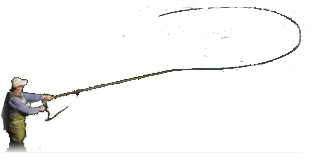-
Ironing bamboo
Some time back, one of you mentioned that you straigtened bamboo blanks with an iron, or by ironing, or something along those lines. Could you explain that process?
Thanks,
Swamp
PS- Y'all already told me about the heat and everything, but I think the poster that I recall has a different method than heat and bend.
-
The steam from an iron is used to heat and make the cane elastic. Hold the iron 2-3 inches from the rod and apply the steam, rotating the rod for even heating. After steaming for 30-90 seconds grasp in your hands and gently bend in the opposite direction as the set. When the rod section cools it will keep the new shape. Repeat the cycle as needed.
I have also taken the set out of a tip using a toaster, hold the rod section over the opening and rotate for even heating.
Any devise that can apply a controlable even heat over a wide area should work. The steam adds a safety factor since it is harder to get moist steam hot enough to burn the bamboo. An alchol lamp or high power heat gun can easily get too hot. Just go slow and do a little at a time. You can always add more heat, just can't undo if it cooks! Remember it takes time for the heat to penetrate, a butt section takes more time than a tip (not more heat, more time).
My favorite tool for the job is a Sears Craftman (made by Bosche) industrial quality heat gun with a spreader nozzle. It has cont. variable air temp. from 120 F to 1200 F, very controlable.
With a little practice you will get a feel for just how much heat it takes for the cane to get flexible. I like to work with bare hans instead of gloves, if I can't handle the cane it's too hot.
I would suggest practicing on some strips before starting on the actual rod. If you don't have access to Tonkin cane trips you can use the bamboo stakes sold at garden centers. The small diameters (1/8" to 1/4") act much like rod sections and the larger diameters (3/4" or more) can be
split into strips, too small for rod building but good for practice.
-
A different ironing method is to put the just-glued blank into your planing form and iron it straight.
I've tried that as well as the heat gun.
What finally helped me get a really straight blank was a device called the tensioner, described in Ray Gould's recently published "Tips and Tapers". Essentially two opposing drill chucks on threaded rods which clamp either end of the blank , which is then straightened, in part by cranking the chucks apart and then keeping it there until the glue sets.
------------------
LIVE TO FISH, FISH TO BE ALIVE.
